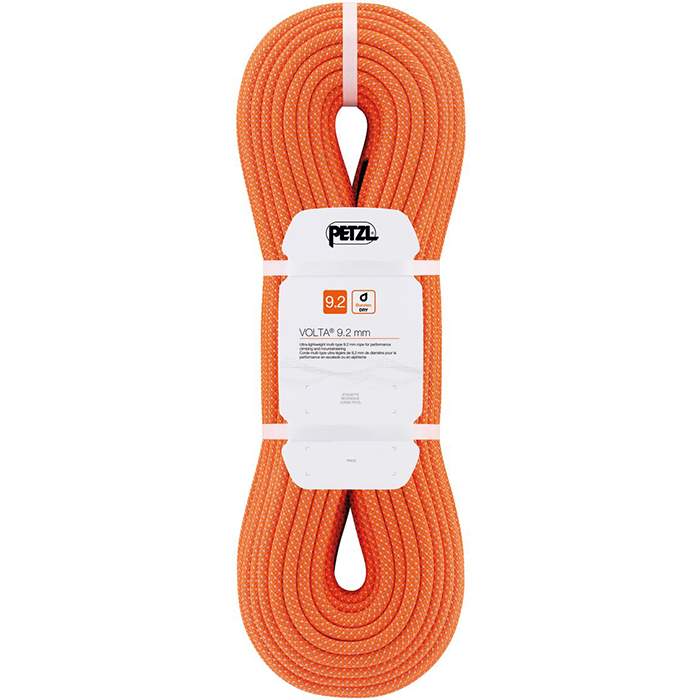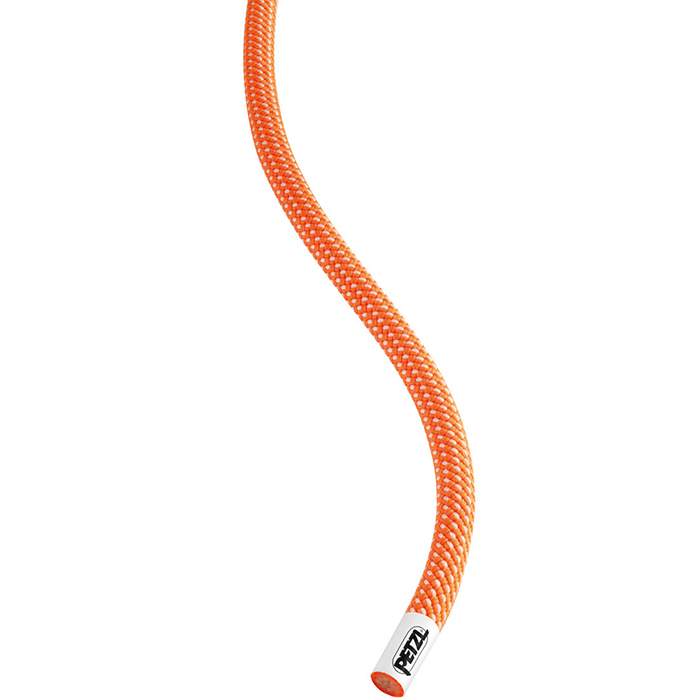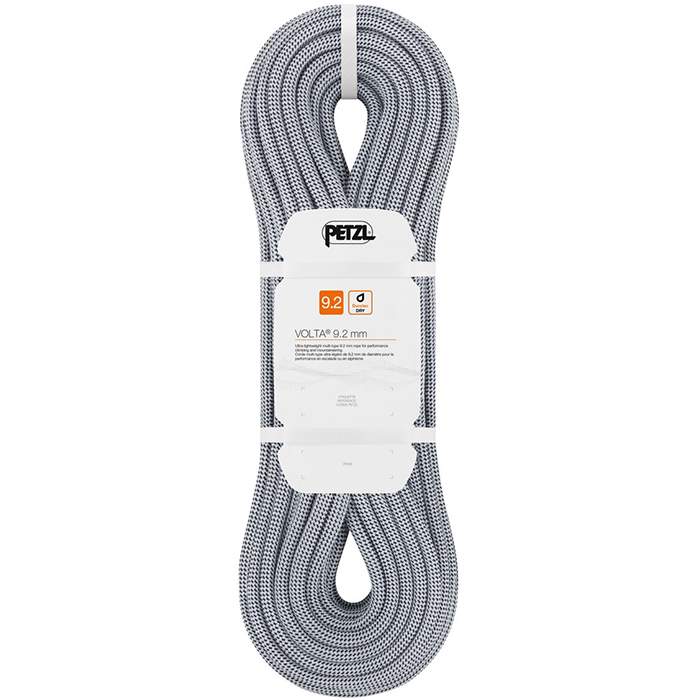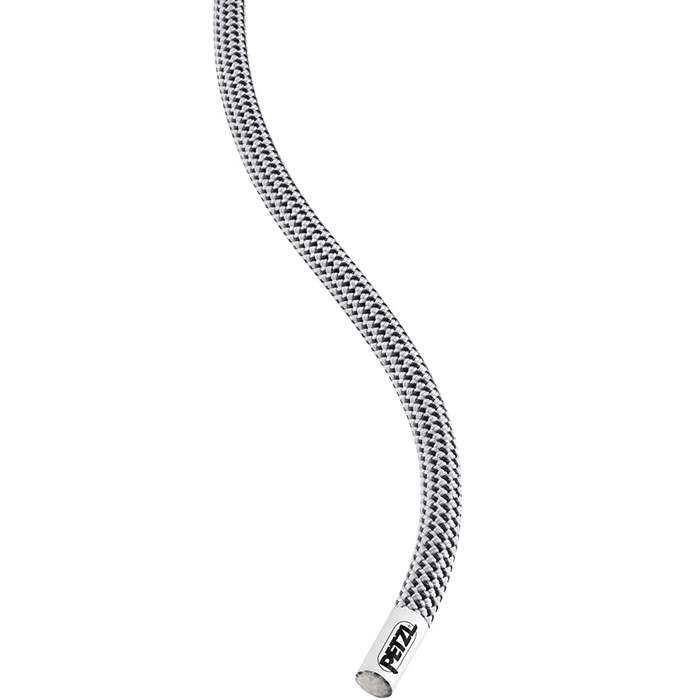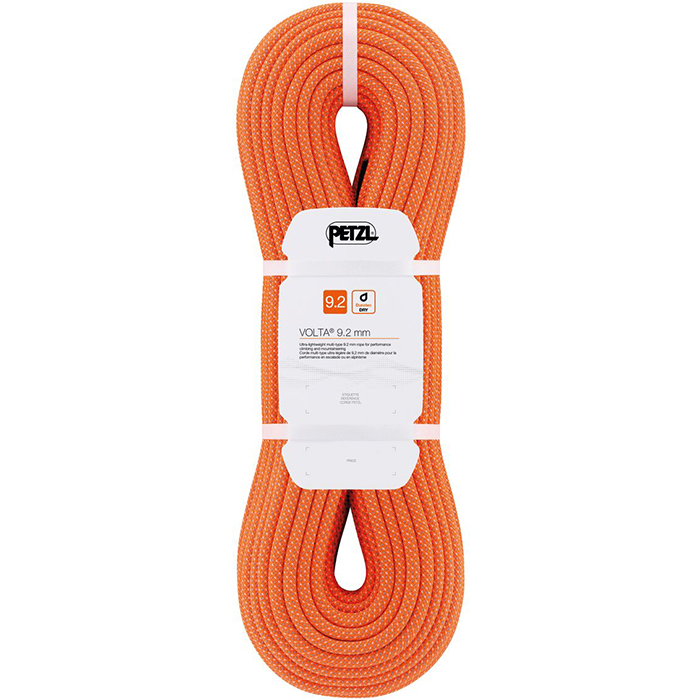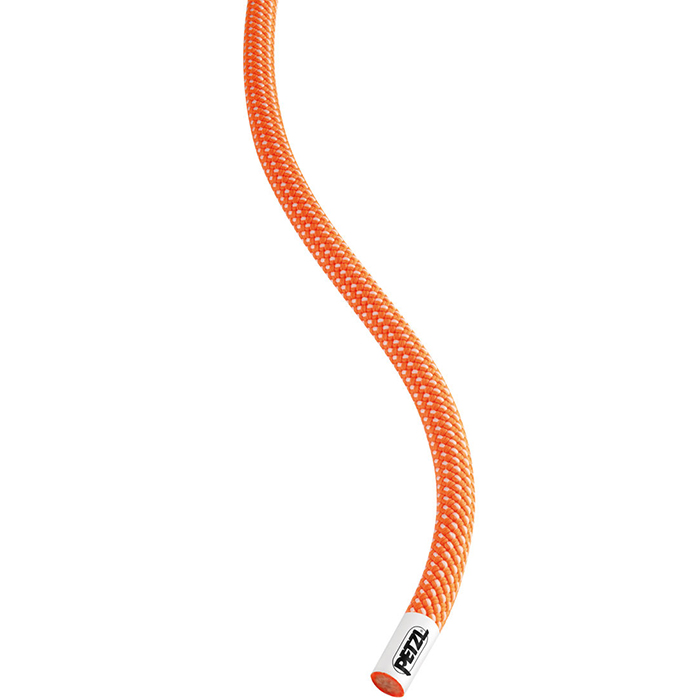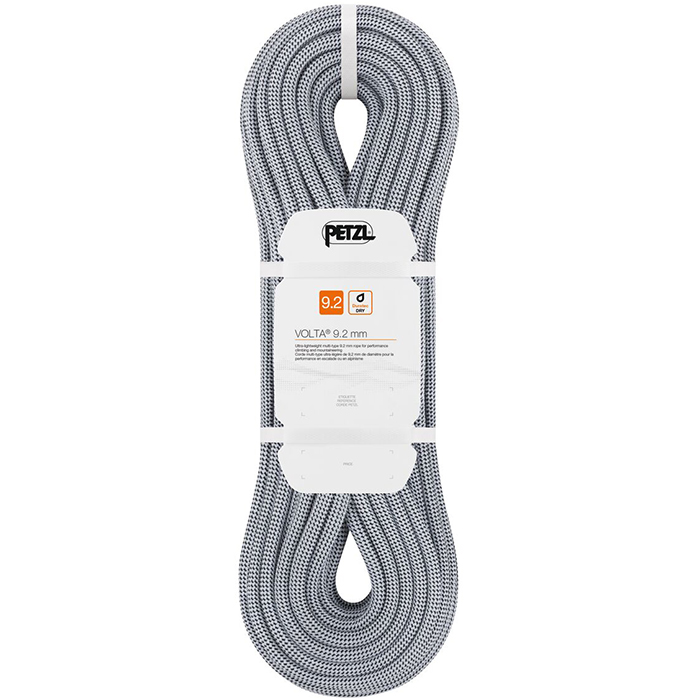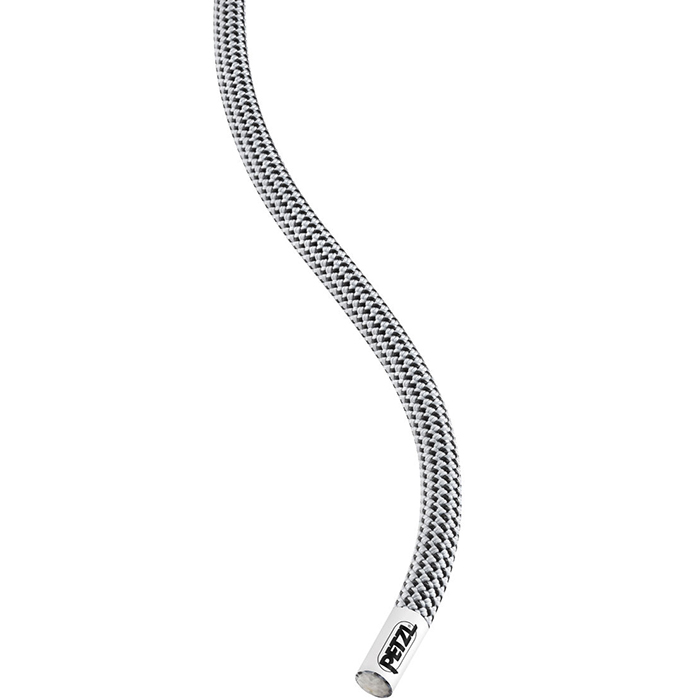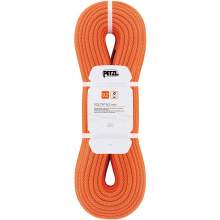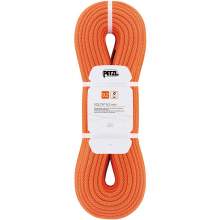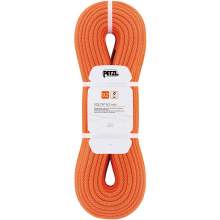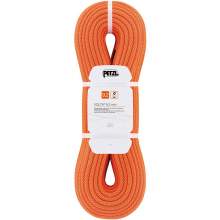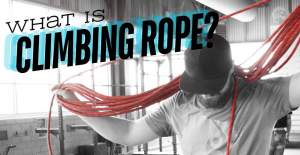Describes with words and helpful photos, how to protect your rope.
9.2mm Volta 30m 2xDry
Description
Ultra-light thin rope for elite climbers:
- allows optimal functioning in the belay device
- multi-standard for use as a single, half or twin rope
- for use in rock, mixed, snow or ice environments
Greater longevity and ease of use in any conditions:
- Duratec Dry treatment: dry treatment makes the rope more resistant to water, dirt and abrasion; handling, grip and other characteristics are retained longer in cold, wet conditions
- UltraSonic Finish: the core and the sheath are bonded together at the rope ends by an ultrasonic process called UltraSonic Finish; gives greater durability and avoids frayed ends
- ClimbReady coil: specific coil makes the rope ready for use; helps the user avoid initial uncoiling mistakes and increases longevity
More effective belaying:
- Middle Mark: indicates the middle of the rope to facilitate maneuvers
- EverFlex treatment: special thermal treatment stabilizes the core strands and improves consistency; offers excellent grip and consistent handling over time
Retail price
When you click a link below and then checkout online, no matter what you buy (climbing gear or not), we get a small commission that helps us keep this site up-to-date. Thanks!

| Weight | 55.0 g/m 3.637 lbs / 1650 g |
| Diameter (millimeters) | 9.2 mm |
| Length (meters) | 30 m |
Rope Type  Type
There are 3 types of dynamic ropes that are used by climbers. They are known as Single, Half (Double), and Twin. The type of rope preferred varies by climbing style, location, and region. Single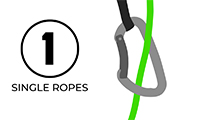
By far, the most common type of rope. Great for indoors and out. In the US, it is the most common sport and big wall and are also used for trad cragging. The handling is simple and the diameter options are quite varied. Half (Double)
The best cure for a meandering route, only one of the ropes will clip into each piece of protection so a mindful climber can can reduce rope drag considerably. You can also rappel twice the distance, it’s easier to safely protect traverse pitches and there is a smaller chance that both ropes would become damaged (by rockfall, crampons, etc). Twin
Both ropes must be clipped through each piece of protection. This is the lightest style of (two) ropes. They excel for rappels, going twice the distance vs a single rope, but do not have the ability to mitigate rope drag even though there are two ropes. It is unlikely both ropes will be damaged at once, and is why many alpine, ice and mixed climbers choose twin and/or half ropes. Learn More
Every rope type and when to use them | Single/Half/Twin |
UIAA Falls (Single / Half / Twin)  UIAA FallsThis refers to the number of UIAA falls a rope has been tested to be able to withstand without breaking. The UIAA fall is a complicated test that is designed to create a uniform standard for strength in ropes, and is not generally reflective of real-world climbing situations. The test involves dropping a weight tied to the rope in such a way that it will see the highest amount of force a real-world situation could generate. The UIAA requires that Single and Half ropes must pass this test without breaking at least 5 times, while twin ropes must withstand 12 falls. In practice, it can likely be concluded that ropes that have higher than this standard number of falls will be stronger and put up with more abuse. It is important to note that any rope that is UIAA or EN certified is considered safe to climb on, regardless of the number of UIAA falls it is rated for. | 6 falls / 20 falls / 30 falls |
Dynamic Elongation (Single / Half / Twin)  Dynamic ElongationThis refers to the amount of stretch measured during the dynamic testing (or drop test) used when certifying ropes. Higher stretch will absorb more force and result in a softer catch but increases chances of groundfall at the beginning of a climb. The EN and UIAA require a stretch of at least 10% and no more than 40% for dynamic ropes. Single and Half ropes are tested individually and Twin ropes are tested as a pair. | 33.0 % / 30.0 % / 26.0 % |
Static Elongation (Single / Half / Twin)  Static ElongationThis refers to the amount of stretch measured during the static test used when certifying ropes. Most climbers will notice the difference in static elongation when climbing in a top rope situation, where higher stretch will make for a springier belay and could result in a ground fall when climbing closer to the ground. The EN and UIAA require a stretch of no more than 10% for Single and Twin ropes and no more than 12% for Half ropes. Single and Half ropes are tested individually and Twin ropes are tested as a pair. | 7.5 % / 7.5 % / 6.0 % |
Impact Force (Single / Half / Twin)  Impact ForceImpact force is the amount of force in kN that is measured at the testing mass during the UIAA dynamic drop rope test. When the weight is dropped, the force measured must be at or below 12kN for Single and Twin ropes and 8kN for Half ropes. The real world application of this test is determining that the rope can dissipate and absorb the appropriate amount of force from the fall as it would be felt by the climber. The variables used in the test set a situation that is well beyond anything climbers encounter, and shouldn't be considered realistic to actual climbing situations. In reality forces of this magnitude would result in severe injury as this test is designed to test the limits of the rope and not the comfort of the climber. | 8.60 kN / 6.80 kN / 10.50 kN |
Dry Treatment  Dry TreatmentWhen a rope is dry treated, it has had a coating applied to its core fibers, its sheath fibers, or both. The purpose of this coating is to reduce the amount of water the rope can absorb when in wet or icy conditions. Wet ropes are heavier, handle and belay differently, and have been tested to be weaker than dry ropes. Many climbers prefer dry treated ropes for very dusty or dirty environments, as they are more resistant to uptake of dirt and can stay cleaner longer. Learn More
Benefits of Dry vs Non-Dry ropes | Sheath & Core |
| Sheath Proportion (%) | 42.0 % |
| Sheath Slippage (mm) | |
| Type of Middle Mark | Marking |
| Rope End Marker | None |
| Certification | CE, EN, UIAA |
RFID / NFC Option  RFID and NCFThis technology can be helpful if you are a gym or professional business where you'd like to track the usage and age of your ropes. RFID is how items are uniquely identified using radio waves (Radio Frequency Identification). It's for 1-way communication from 10cm to 100m away depending on the frequency. Example: Airport Baggage. NFC is a subset of RFID that is restrained to close proximity communication typically less than 10cm (Near Field Communication). NFC chips can operate a 2-way signal to exchange information. Example: Apple Pay. | None |
No reviews yet.
Both these models are high quality and comparatively durable dry treated triple rated ropes. I would recommend a pair of 50m VOLTAs to any climber regularly climbing routes as a three. 9.2mm is my preferred diameter for a work rope when rock guiding, being both durable and a little easier to handle. I have been very impressed with how the VOLTA has worn compared to other similar ropes, and I think this is largely thanks to its high percentage of sheath. The skinnier VOLTA GUIDE is a more specialised rope. I would recommend this for alpine rock routes, multi pitch sport routes, and for pairing with an 8.5mm half rope as a great road trip combo. It is a shame it's only available in one colour.
This rope was widely liked among our testers and the climbers we polled. Its low weight, supple hand, and smooth catch make for a pleasurable climbing experience. It just missed winning our Top Pick award for skinny alpine/sending rope, losing to the lighter and thinner Sterling Nano IX.
We found that we did not like the black color of our test rope. Not only does it not stand out well in photos, but it made it very difficult to find the middle-mark, especially in low light situations. If possible, we suggest choosing the orange version of this rope.
The Volta 9.2mm is a multi-standard rope, certified for use as a single, half or twin rope, making it extremely versatile, especially in alpine terrain. At 55-grams per meter, it’s weight is similar to other ropes of this diameter. The Volta features a Duratec Dry dry treatment, and resisted every effort to wet it out, even during long, wet, spring ice days. The rope also comes with a number of other labels — UltraSonic Finish, ClimbReady, EverFlex — but all you need to know is that the rope handles beautifully. Every person who’s climbed on it — from professional athletes to mountain guides to weekend warriors — has commented on the smooth, soft feel and supple handling. This is a really, really nice rope.
Because the Volta gives such a soft catch, I might recommend it as a good option for lightweight (female) sport climbers who are used to getting harder catches from their heavier belayers. Or, if you prefer a soft/supple handle, this could be a great rope for you. But if you’re a heavier sport climber and like a stiffer rope, look elsewhere for your next 9.2mm redpoint rope.
A long but informative video, talks about all the features of Petzl Dynamic ropes in details.
Warning: This video is dubbed in English. If you're getting antsy, skip to section 7:40-8:15 for one of the most interesting parts, where they show a hardware specific camera inspection.
A checklist helping you monitor your rope health, helping to know when to retire your rope.
Helpful instruction for inspecting Petzl Rope.
Field of application, inspection and precautions for use of Petzl Rope with instructional pictures.

